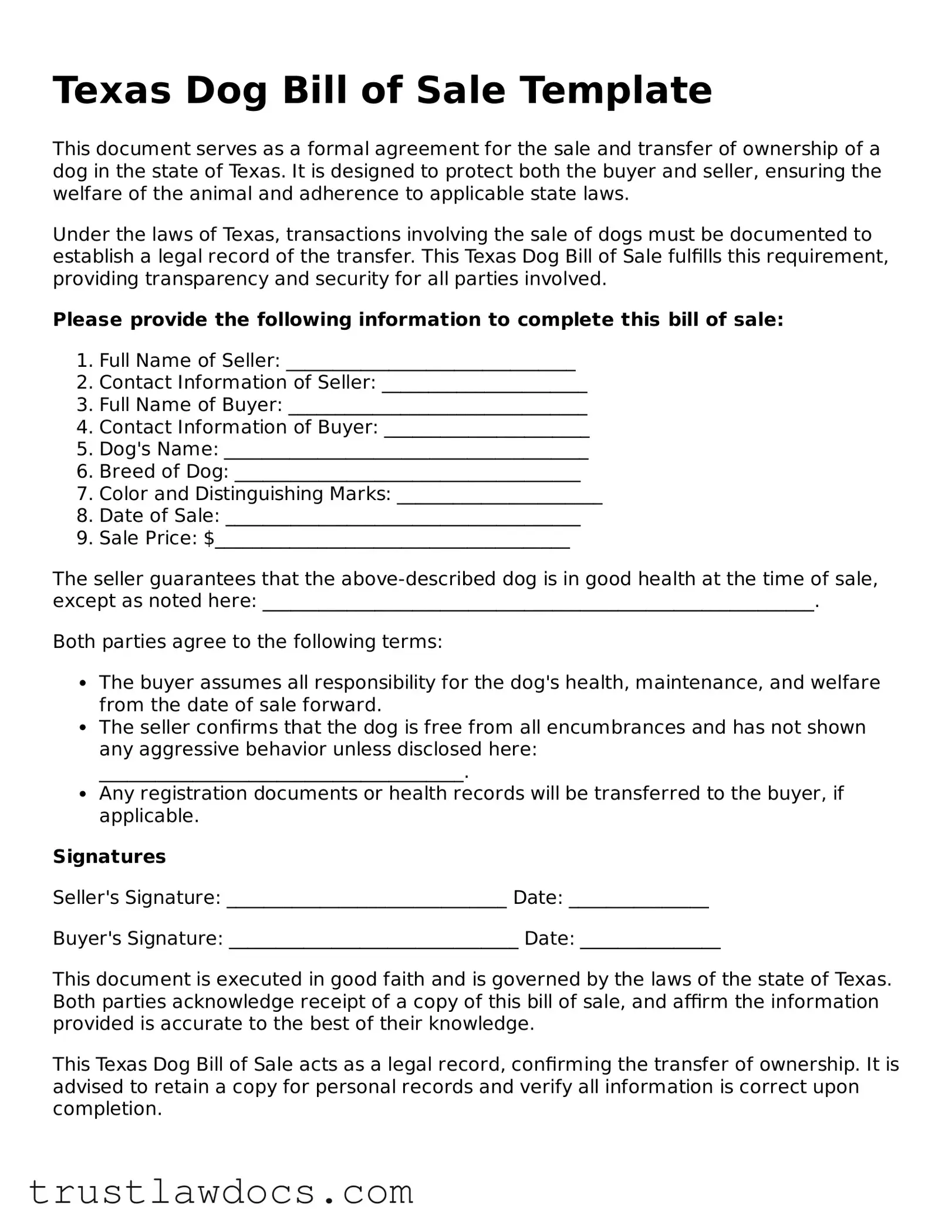What is a Texas Dog Bill of Sale?
A Texas Dog Bill of Sale is a legally binding document that records the sale and transfer of ownership of a dog from one party (the seller) to another (the buyer) in the state of Texas. It provides proof of purchase and details the agreement specifics, such as the dog's description, the sale amount, and any warranties or agreements made at the time of sale.
Why do I need a Dog Bill of Sale in Texas?
Having a Dog Bill of Sale is crucial as it officially documents the transaction, establishing the buyer as the new legal owner of the dog. This document can protect both parties in case of disputes, clarify the details of the transaction, and serve as a record for registration or insurance purposes. In Texas, it also ensures that the sale complies with state laws and regulations regarding pet sales.
What information should be included in a Dog Bill of Sale?
A comprehensive Dog Bill of Sale should include the date of sale, the names and addresses of the buyer and seller, a detailed description of the dog (breed, color, age, sex, microchip ID, etc.), the sale amount, any warranties or guarantees, the signatures of both parties, and notarization if required. It may also list any additional terms or conditions agreed upon.
Is it required to notarize a Dog Bill of Sale in Texas?
While notarization is not a strict requirement for a Dog Bill of Sale to be considered valid in Texas, having the document notarized adds a level of legal protection and authenticity. It acts as a witness to the signatures, helping to prevent fraud and ensuring that the document is legally binding.
Can a Dog Bill of Sale be used for puppies?
Yes, a Dog Bill of Sale can be used for puppies as well as adult dogs. In fact, it's equally important when purchasing a puppy to have a record of the transaction, especially to verify the age, breed, and any pedigree information or health guarantees provided by the seller.
What happens if I lose my Dog Bill of Sale?
If you lose your Dog Bill of Sale, it's advisable to contact the seller for a duplicate. If that's not possible, you can draft a new document that both parties can sign again. Maintaining digital copies can prevent such issues. However, a lost Dog Bill of Sale can complicate proving ownership or resolving disputes, so keeping it safe is essential.
Is a verbal agreement enough for selling a dog in Texas?
While verbal agreements can be legally binding, proving the specifics of the agreement can be challenging without written documentation. A Dog Bill of Sale serves as concrete evidence of the terms agreed upon by both parties, providing protection and clarity. Therefore, even though a verbal agreement might be binding, having a written Dog Bill of Sale is highly advised.
How do I ensure the Dog Bill of Sale is legally binding?
To ensure the Dog Bill of Sale is legally binding, make sure it contains accurate and detailed information about the transaction and both parties, include the signatures of both the buyer and seller, and consider notarization. It's also wise to consult with a legal professional to ensure that the document complies with Texas state laws and adequately protects your rights and interests.
